I’m running this town and there’s only one way to run it: my way!
Edward G. Robinson gets typecast (perhaps rightfully so) as the tough and gritty urban gangster of 1920s Chicago. But he could be equally tough and gritty in other situations as well. Barbary Coast, however, probably isn’t the first place you’d look.
You’d think from the title that we’d be in the early years of the United States, probably around the time of the Barbary Pirates. If memory serves, that’s be the Jefferson administration. Ole Edward G in a period piece dressed as a pirate could be amusing, but isn’t probably most people’ sides of a good time.
Thankfully we aren’t quite that far back in history and Robinson isn’t playing a pirate, though at times his attire makes piracy look like a good option. Instead we are in 1850s San Francisco all of which would seem to let you think that Robinson’s been horribly miscast. Think again, as Barbary Coast has a few surprises in store for you.
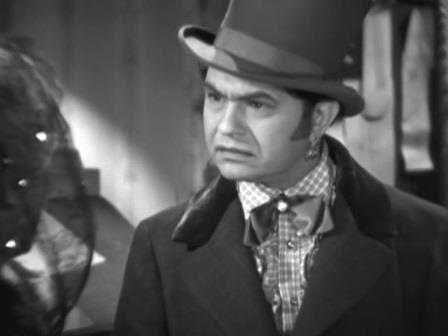 In fact Edward G. Robinson is playing to type as Luis Chamalis, a local thug who has garnered control of most of the city and operates the largest saloon and gaming house in the area, catering almost exclusively to prospectors and liberating them both fairly and otherwise of their newly gotten wealth.
In fact Edward G. Robinson is playing to type as Luis Chamalis, a local thug who has garnered control of most of the city and operates the largest saloon and gaming house in the area, catering almost exclusively to prospectors and liberating them both fairly and otherwise of their newly gotten wealth.
Into this den of sin comes Miriam Hopkins in the form of Mary Rutledge. She’s come from New York to marry, only to find that her fiance’s passed away during her voyage. Though outwardly as pure as the driven snow, we learn straight away that she never loved the man as she quickly looks around for another ticket to prosperity.
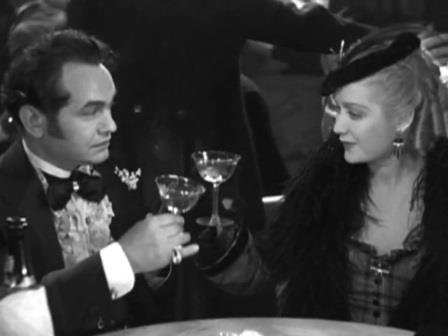 Shortly thereafter she meet Chamalis and they enter into an arrangement where he gives her a job running the roulette table (which given her appearance will increase his business) and in return he’ll cut her a slice of the profits. There are also thinly veiled suggestions of a more physical relationship, which drives a lot of Chamalis’ later motivations.
Shortly thereafter she meet Chamalis and they enter into an arrangement where he gives her a job running the roulette table (which given her appearance will increase his business) and in return he’ll cut her a slice of the profits. There are also thinly veiled suggestions of a more physical relationship, which drives a lot of Chamalis’ later motivations.
Mary- now renamed ‘Swan’ in her work with Chamalis- chafes under his bullheaded and arrogant bossiness in spite of her newfound wealth and constantly changing gowns. While out for a ride to escape the increasingly possessive Chamalis she meets Jim Charmichael (Joel McCrea) whose a prospector making his way back home, having already panned himself a small fortune.
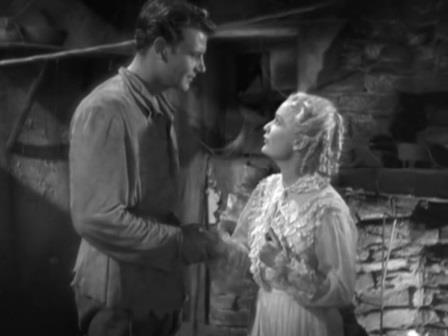 After waiting out the rainstorm together they part, after she rebuffs his entreaties to meet again, knowing that her somewhat sordid life doesn’t match up well at all with Carmichael’s honesty and poetic philosophies.
After waiting out the rainstorm together they part, after she rebuffs his entreaties to meet again, knowing that her somewhat sordid life doesn’t match up well at all with Carmichael’s honesty and poetic philosophies.
With his ship’s departure delayed by fog, he ends up at her roulette wheel. Angry at seeing her true self, he quickly gambles away his fortune to her, finally having to get a job washing dishes at the saloon to earn enough to pay his way home.
As time passes the tension between everyone increases; Mary and Jim; Mary and Chamalis, Chamalis and the city brethren. Finally the city rises up, first hanging after a ‘walking trial,’ of Chamalis’ henchman Knuckles. In one of the better scenes of the film the Vigilantes (as the posse calls themselves) walk Knuckles to his demise. Quick editing and the soft sound of footfalls mixed with a touch of irony give you the sense that finally the tide has turned.
Carmichael and Mary finally confess their love for one another and decide to make a break for the ship, but on the way have a final confrontation with Chamalis, where the biggest surprise is yet to occur.
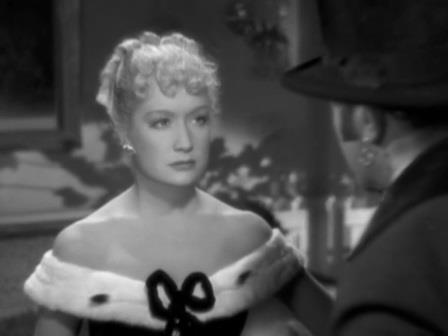 Both Edward G. Robinson and Miriam Hopkins are outstanding in this picture, which in itself is surprising as they detested each other for the most part. Together they make much of the rest of the cast superfluous. Coupled with a strong plot that is a little bit of everything ranging from Western to crime thriller, this one pushes all the right buttons.
Both Edward G. Robinson and Miriam Hopkins are outstanding in this picture, which in itself is surprising as they detested each other for the most part. Together they make much of the rest of the cast superfluous. Coupled with a strong plot that is a little bit of everything ranging from Western to crime thriller, this one pushes all the right buttons.
Miriam Hopkins is strong throughout, but somewhat surprisingly is much better in her Swan guise than as her ‘real’ self. As Swan she’s corrupt, sinister and wasted all at the same time.
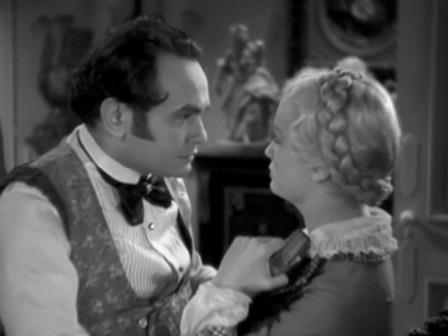 Edward G. Robinson plays as you’d expect, wearing the role like a comfortable old robe. He’s purely in his element and you can tell that he is definitely no letting his garb or the setting get in his way. True surely as well for both he and his costar is the fuel their off-screen frustrations give to their on-screen disagreements.
Edward G. Robinson plays as you’d expect, wearing the role like a comfortable old robe. He’s purely in his element and you can tell that he is definitely no letting his garb or the setting get in his way. True surely as well for both he and his costar is the fuel their off-screen frustrations give to their on-screen disagreements.
So strongly did they disagree, primarily due to Miriam Hopkins’ scene stealing antics, that during a scene which called for Robinson to slap Hopkins he slapped her so hard so as to knock her down. The crew which for the most part shared his frustrations with her, reportedly applauded in appreciation.
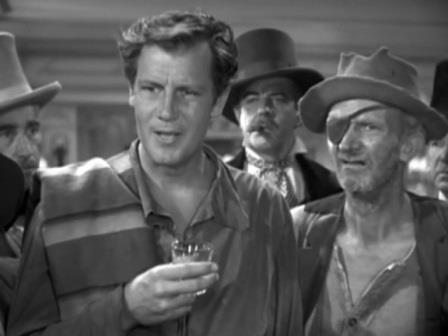 Unmentioned so far is Walter Brennan as ‘Old Atrocity,’ a local drunk, schist ear, man for hire, etc. In an odd way he becomes the conscious of the film, as he will do anything for a buck or two, even when he knows it’s the wrong thing to do. He helps Swan swindle Carmichael out of his gold, then returns it out of guilt, but not without keeping a bag for himself first.
Unmentioned so far is Walter Brennan as ‘Old Atrocity,’ a local drunk, schist ear, man for hire, etc. In an odd way he becomes the conscious of the film, as he will do anything for a buck or two, even when he knows it’s the wrong thing to do. He helps Swan swindle Carmichael out of his gold, then returns it out of guilt, but not without keeping a bag for himself first.
If there is a weakness in Barbary Coast it is Joel McCrea. There’s really nothing there to justify Mary’s interest as he’s almost naive to the point that it borders on stupidity. Though his persistent espousing of verse is likely meant to reinforce his goodness, it comes off as forced and trite. It’s this romantic storyline which fails to hold water.
 That said, there’s enough going on that this weakness isn’t enough to torpedo what’s a pretty good picture. Though usually films which can’t make up their mind as to what they want to be end up a muddled and confused mess, this is one where it only leaves you wanting more. At the end of the day it is surprising that Barbary Coast isn’t mentioned more often among director Howard Hawk’s better films.
That said, there’s enough going on that this weakness isn’t enough to torpedo what’s a pretty good picture. Though usually films which can’t make up their mind as to what they want to be end up a muddled and confused mess, this is one where it only leaves you wanting more. At the end of the day it is surprising that Barbary Coast isn’t mentioned more often among director Howard Hawk’s better films.
